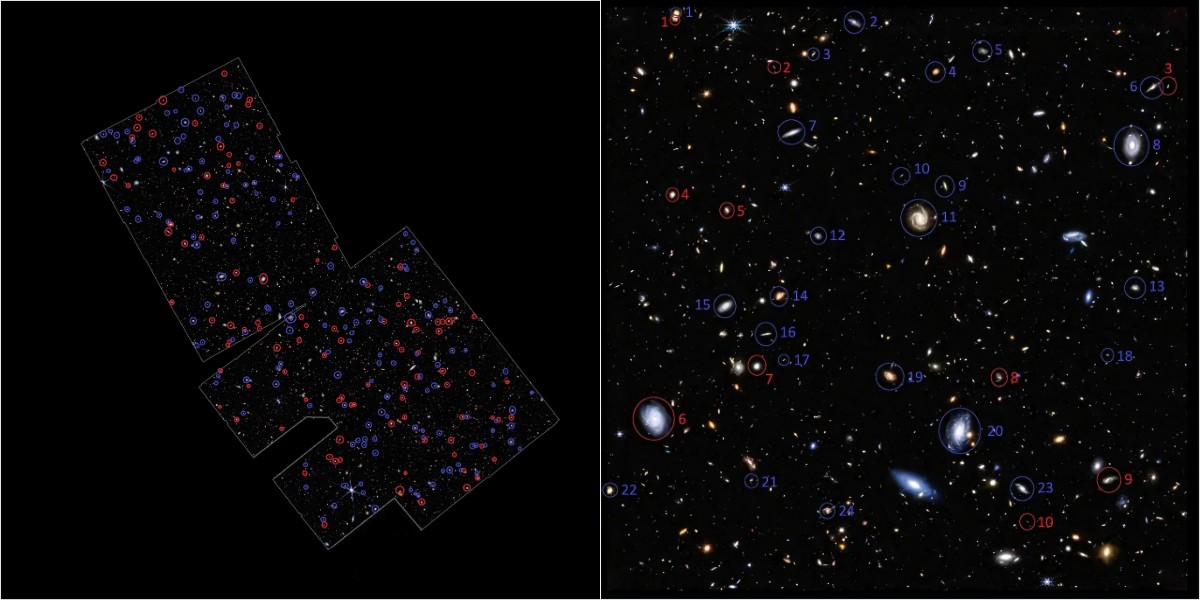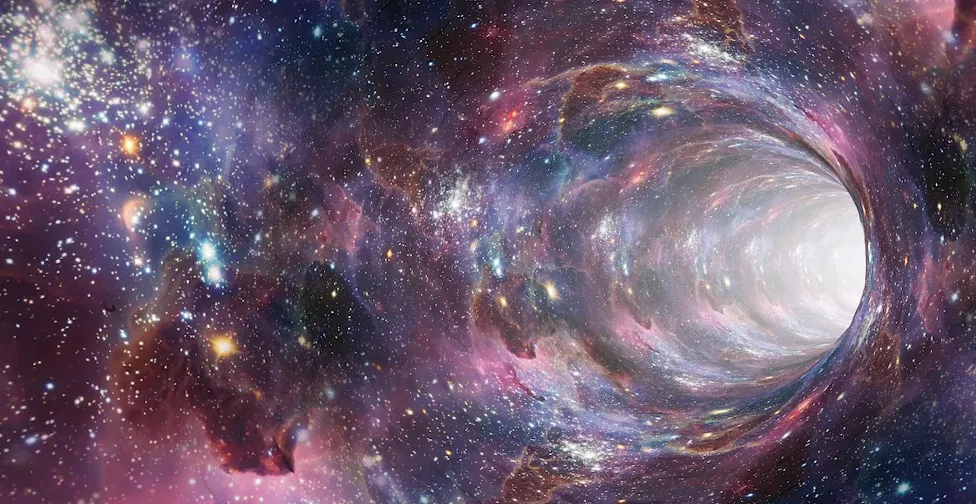The latest analysis of deep space images «taken by the James Webb Space Telescope (JWST) shows that the vast majority of ancient galaxies rotate in the same direction, and one explanation for this phenomenon — is that the Universe may have already been born rotating, and may be an internal part of a black hole in a larger «parent universe.

A team of researchers led by Lior Shamir found in Webb’s data that about two-thirds of the 263 galaxies he recorded rotate clockwise, while only a third — counterclockwise.
«The study was conducted through quantitative analysis, but the difference is so obvious that anyone looking at the image can see it,» says Shamir. «No special skills or knowledge are required to realize that the numbers are different».
In a random Universe, the number of galaxies rotating in one direction should be approximately the same as the number of galaxies rotating in the other direction — so the team’s conclusion seems rather unexpected. However, the simplest explanation in this case is that the Universe was originally rotating and was born in a rotating black hole.
«One explanation is that the Universe was born rotating and it is consistent with the theory of “black hole cosmology”, which says that the entire Universe is the interior of a black hole. However, if the Universe was indeed born rotating, it means that existing theories about the cosmos are incomplete».
Black holes — doors to other worlds
Black hole cosmology (other names — «Schwarzschild cosmology», «black hole cosmology model») — is a cosmological model according to which the observed universe (or metagalaxy) is located inside a black hole. The idea was first introduced by theoretical physicist Raj Kumar Patria and mathematician I. J. Hood, and it assumes that the «Schwarzschild radius», better known as the «event horizon» (the limit beyond which nothing can escape a black hole, not even light) is also the horizon of the visible Universe.

This has other implications: every black hole in our universe could be a door to another universe, for which ours would be the mother universe. However, if they really existed, they would be inaccessible to us, because they are also beyond the event horizon — a one-way point of trapping light from which it cannot escape (i.e., information can never get from the inside of a black hole to an external observer).
The Milky Way confuses us
Another possible explanation is that the rotation of our galaxy may affect the way we see ancient galaxies. Previously, scientists believed that the Milky Way’s rotation speed was too slow to have a significant impact on the observations made by the Webb Telescope. But if the theory is correct, then our current measurement methods will need to be adjusted.

«Recalibrating distance measurements can also explain several other unsolved questions in cosmology, such as differences in the expansion rates of the Universe and large galaxies that, according to existing distance measurements, should be older than the Universe itself».
The team’s research was published in Monthly Notices of the Royal Astronomical Society.
- The James Webb Space Telescope is an infrared space telescope designed for a wide range of observations in astronomy and cosmology, including observations of the most distant objects and events in the Universe, such as the formation of the first galaxies.
- The $10 billion device has been observing space since 2022 and has already provided a lot of interesting information to astronomers — in particular, it confirmed the existence of three of the oldest galaxies we know, made new observations of Enceladus geysers, took amazing images of Saturn, discovered a new carbon compound in space, as well as a source of carbon dioxide on the icy surface of Europe, and more.
Source: Phys.org, Space.com

Spelling error report
The following text will be sent to our editors: